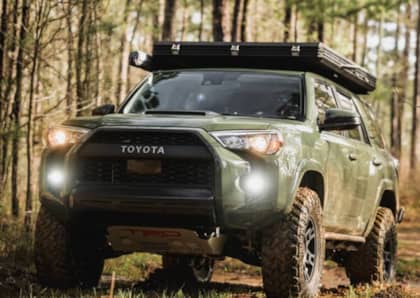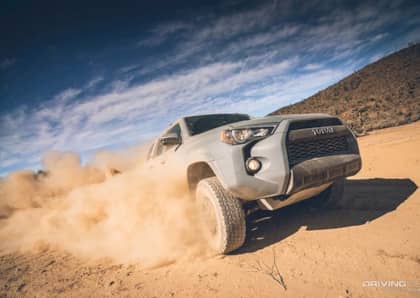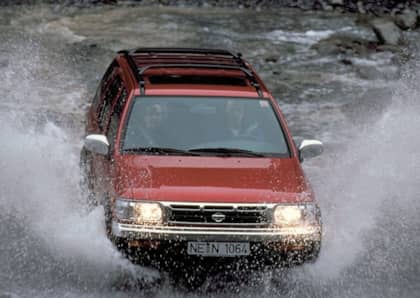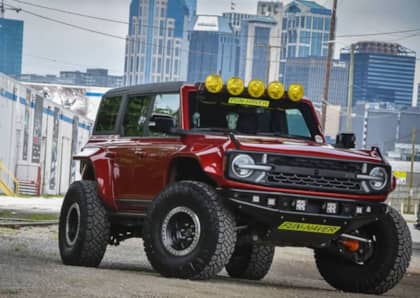Which engine swaps are right for your off-road rig?
It's a great time to be an off-road enthusiast. Never before have there been so many inexpensive and modern 4x4 options out there, sandwiched between the list of showroom-fresh options on one side and classic trucks and SUVs on the other.
In fact, the 4x4 market has become so diverse that many no longer feel constrained to stick with a factory platform. Instead, off-roaders are picking a frame and body style they appreciate and outfitting it with the drivetrain of their choice to create the go-anywhere rig of their dreams. The aftermarket has swelled to support these mechanical heart transplants, and likewise the amount of wisdom and experience available to first-timers via the Internet.

There's no one-size-fits-all solution when it comes to choosing the best engine swap for your off-road rig, but there are definitely a few major considerations to keep in mind during the selection process. Let's take a look at the criteria most 4x4 fans consider during their build, so you can figure out which ones are the most important to you.
Not Just Power, But Mileage
Massive amounts of big block power can be a lot of fun in any truck or SUV, especially if you have reliable access to the steady stream of gas stations required to support a heavy cubic inch strategy. Out on the trail, however, your fun only lasts as long as the fuel in your tank, and even with auxiliary tanks installed or a stack of jerry cans in the trunk, your fuel mileage is going to determine just how far you can stray from civilization.

This is one of the many reasons that a lot of hardcore off-road fans end up going the diesel route. Traditionally, a turbodiesel swap can add significantly range to almost any platform, and there's a healthy subculture surrounding diesel motors that can substantially improve on what the factory had to offer in terms of efficiency.
Surprisingly, mileage is also one of the more compelling reasons to switch over from an older V8 design to a more modern one. The LS family of eight-cylinder engines from General Motors are compact, offer a reasonable amount of grunt even in stock form, and are often at least twice as fuel efficient as 60s, 70s, or 80s V8 designs.

The same is true of modern V6 motors that are less exotic, and certainly less powerful—we're looking at you, 3.5-liter Isuzu—but which marry a good balance between brawn and efficiency, at very wallet-friendly prices on the used market.
But Power, Too
All of the above isn't to say that power isn't important. Having the right amount of torque, in the correct rpm range, is often the key to getting in and out of difficult off-road situations. Again, this is an area where diesel swaps truly shine, as they produce most of their torque at very low engine speeds which gives you more control in low-traction situations.

When we say power, though, we don't mean to suggest that you need to go overboard. Sure, a built LS engine sounds mean and can churn up mud with the best of them, but there are plenty of people out there in Trackers, Samurais, and similarly-sized rigs that will see power benefits moving to a larger four-cylinder engine that may very well be plug-and-play in terms of the complexity of the swap.
Avoid Breakdowns, Find Easy Fixes
Once you've figured out the level of power and efficiency you want from your project, another way to help narrow down potential swap candidates is to rank them by how reliable they'll be, and how simple they are to fix.

Reliability and ease of repair is a major reason why owners of classic 4x4s often make the move to a more modern drivetrain. Sure, it often costs the same or less to rebuild an older motor to the same level of power, but not all classic engines maintain good driving manners when putting out more grunt than they were designed to do. The same can be said for reliability, as a mightier engine build might simply reveal weak points in the design that are associated with the era in which it was engineered.
In terms of repairs, some older trucks are also reaching a stage where replacement parts aren't easy to locate, and are starting to get expensive. Not only that, but if you're far from home and the local auto parts shop doesn't have a part you need, you're adding extra time and inconvenience to your adventure that might not be an issue if the engine in your vehicle is more common.

All of the above has often been the reason cited for the proliferation of the small block Chevrolet—the first and second generation versions—which share so many parts, and are simple to repair and diagnose. They're still a very popular choice as an inexpensive swap in almost any vehicle, even as they begin to age out and get replaced by equally ubiquitous (although more complex) LS Gen III and Gen IV GM engines.
Stay OEM?
For some 4x4 owners, there's a powerful impulse to keep things in the family when debating an engine swap. Whether you're a brand purist or just want to support the automotive community you're a part of, there's nothing wrong with keeping a Ford engine in a Ford, a Toyota engine in a Toyota, or a Cummins engine in…well, whatever you want, really.

The flip side of loyalty like this is that you'll need to do your research into the practicalities of sticking with an OEM answer. If you're looking at a more modern engine, be aware that some overhead camshaft designs are much wider than pushrods and don't fit in older, narrower engine bays. You may also end up paying more for the same performance you could have gotten cheaper from an outside brand due to availability, so budget needs to be another consideration. Spending more to end up with the right motor for your project isn't always a bad option, but make sure it fits in with your plans before committing to keep things as close to 'original' as you can.
Curious to find out more about 4x4 swaps? Check out this look behind the scenes at deciding which engine to swap into a classic Jeep Grand Wagoneer.











